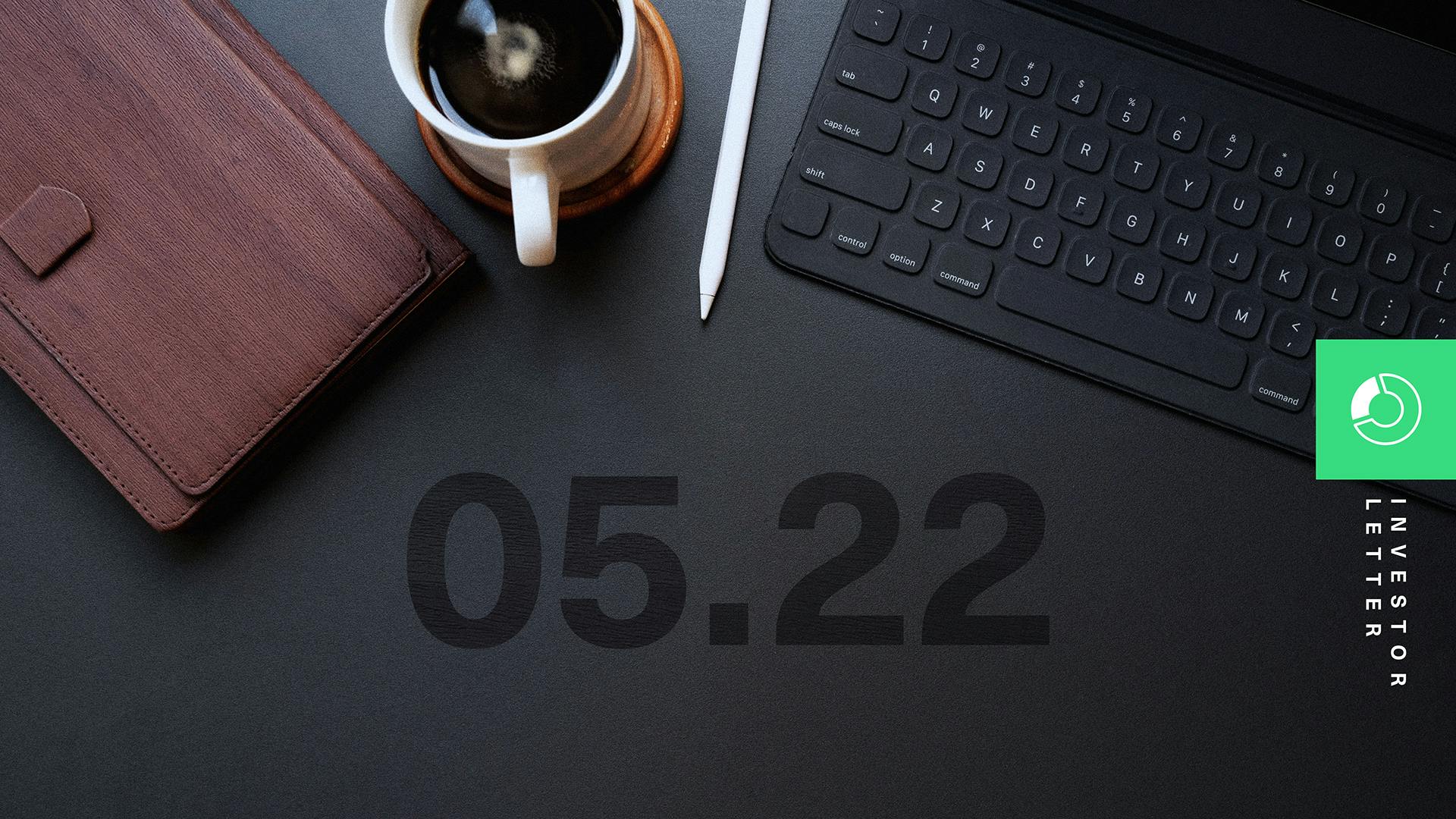The November 2018 Bitcoin Cash Fork
San Francisco • Nov 13, 2018
The market expects Bitcoin Cash to fork on November 15. We examine what forks are, why Bitcoin Cash is forking (again) and what it means.
On November 15, 2018, the bitcoin cash blockchain will split in two. This action—called a “hard fork,” or “fork”—will leave holders of bitcoin cash with two separate coins, one linked to the main network and the other linked to an entirely new chain.
Forks are a unique feature of the blockchain space. Not surprisingly, there are a lot of questions surrounding why they occur and what they mean for the long-term value of cryptoassets.
This research brief aims to explore both hard forks generally and the proposed November 2018 bitcoin cash hard fork specifically. It will also examine how Bitwise, and the Bitwise Index Methodology, handles forks.
What is a fork, and why does it occur?
The blockchains that underlie cryptoassets like bitcoin and ether are powered by software. This software governs how transactions are processed, how data is stored, and how different computers on a particular chain communicate with one another.
As we explored in the research memo Seven Debates On What Is Driving Value in the Crypto Market, there are many different ways to design this software and create a blockchain. For example, you can build a blockchain that is extremely decentralized, or one where control is concentrated in a few spots. You can also build a blockchain that allows any type of program to be built on top of it, or one that limits your programming options to a small set of commands.
A fork occurs when there is a disagreement over how an existing blockchain should work.
What is an example?
One of the most important forks in crypto history occurred in August 2017, when bitcoin cash separated from bitcoin. At the time, the bitcoin community was engaged in a heated debate on the best way to scale its network to handle higher transaction volumes. One group thought the best approach was to facilitate “off-chain scaling,” such as allowing people to trade bitcoin with one another without having to report every transaction to the official chain. Another group thought the best approach was to facilitate “on-chain” scaling by making each block of transactions bigger.
The two sides couldn’t agree, so they forked.
That meant some miners on the bitcoin blockchain decided to run a version of bitcoin that pointed toward off-chain scaling, while others ran a version with a larger block size. The two chains were different enough that they were incompatible. As a result, there were two separate blockchains and two separate coins. The new coin came to be called “bitcoin cash.”
Why is bitcoin cash forking again?
Interestingly, the expected fork in November 2018 is also driven by a debate around scaling. Part of the bitcoin cash community wants to upgrade the network to require that all transactions entered into a block be ordered in a canonical fashion. This will pave the way for future upgrades that are designed to make the chain faster at processing large blocks.
Another part of the bitcoin cash community thinks this is a bad idea. This faction is spearheaded by a group called “Bitcoin SV” (SV stands for “Satoshi’s Vision”). The people behind Bitcoin SV are originalists: They believe the network should only adopt ideas that were envisioned in the original bitcoin white paper, as written by Satoshi Nakamoto. Since the original white paper did not imagine transaction ordering, this group says it should be off the table.
Does every disagreement lead to a fork?
No. For a fork to occur, it must be adopted by a meaningful portion of the miners that run a particular blockchain. These miners must be convinced, among other things, that the project will have sufficient support to facilitate a liquid trading market in the new asset. Without such a market, miners can’t get paid for maintaining the network. Therefore, if a developer proposes a change to the software that no one supports, it will not survive.
What happens to the value of a chain (and its related cryptoasset) when a fork occurs?
This is where things get interesting.
One analogy people use to discuss forks is corporate spinoffs. But spinoffs generally do not create new value: If a $100 billion company spins off a $20 billion subsidiary, you would expect the value of the parent to drop from $100 billion to $80 billion to offset the new business. Spinoffs tend to be net-neutral, at least in the short term.
With forks, at least historically, that hasn’t been true. To date, most forks have been value-creating events.
When the 2017 bitcoin cash fork was announced, for instance, the price of bitcoin was hovering around $2,800. After the fork was announced, prices dropped to $2,700. But the fork entitled each bitcoin holder to one bitcoin cash coin, which began trading at $555. In sum, investors started with $2,800 in value and ended with $3,255, a 16% increase.
It’s easy to imagine scenarios where this wouldn’t happen: where forks would act more like corporate spinoffs, or where they could actually destroy value. But historically, the market has greeted them positively.
Of note, bitcoin cash has rallied by more than 50% in the past week in anticipation of the upcoming fork.
Wait a second: How can you create value out of thin air?
The fact that forks have historically been value-creating events bothers many observers. How can you create value out of thin air? But the value-creating nature of a fork makes sense if you think about it from the right perspective.
For instance, everyone agrees the bitcoin network needs to scale if it’s going to succeed. At Bitwise, we think the most likely solution will come from off-chain scaling. That explains, in part, why bitcoin is worth more today than bitcoin cash.
But we could be wrong. On-chain scaling is interesting too, and there’s a chance that it is the answer. It’s also possible that bitcoin and bitcoin cash will ultimately serve different use cases, and that those markets are bigger in aggregate than bitcoin’s market was pre-fork. Viewed this way, forks can be value-creating events.
That can’t continue forever. How many forks are too many?
Good question. The value of a cryptoasset is directly related to the size of the network surrounding that asset, and it’s easy to imagine a series of significant forks fracturing a community and ultimately destroying value. We’re probably too early in the growth curve of crypto for this to be a concern, but it could become one in the future.
One concern we hear a lot about with forks involves scarcity. A key selling point of bitcoin, for example, is that there will only ever be 21 million bitcoin. What does that mean if there can also be 21 million bitcoin cash, and so on and so on, through an infinite number of forks?
The answer is “not much.” Just because you can replicate the bitcoin blockchain and launch an infinite number of new coins, that doesn’t mean you can create a sufficient ecosystem to sustain a meaningful fork. You could theoretically create 10,000 different competitors to Twitter, too, but it wouldn’t reduce Twitter’s value, because no one would care, unless a significant community embraced one of those alternatives. Blockchains are open-source software; the value lies in the network, not the code.
You can have an infinite number of forks and there will still only ever be 21 million bitcoin. If the market decides that bitcoin—and not any of the forks—is our primary digital store of wealth, those 21 million bitcoin will be worth a lot of money.
How does Bitwise monitor and handle forks for its indexes and funds?
Bitwise’s indexes have a rules-based, transparent and repeatable methodology for monitoring and handling hard forks. Our funds are benchmarked against these rules-based indexes.
The full methodology for our indexes is available online. The section below highlights the relevant rules that deal with hard forks, and adds information on our internal procedures for tracking forks as they move through the system and handling forked coins once they occur.
Before The Fork
Bitwise follows a three-step process to comprehensively monitor the ecosystem for forks and potential forks.
First, we subscribe to the announcements pages for the leading implementation node of each cryptoasset in our indexes. Most forks are announced on these pages long before they occur.
Second, we aggressively monitor the major social media channels, including Twitter, Reddit, and Telegram, surrounding all cryptoassets in our indexes. This is often where mention of minority forks first appear, and the communities surrounding these assets are quite active.
Finally, we programmatically monitor the complete list of coins that are available on each of Bitwise’s 21 approved exchanges. This ensures that we capture each and every fork that is meaningful enough to merit listing on a legitimate exchange. Since you can retrospectively claim forks, this helps ensure our funds capture all meaningful value for shareholders.
After The Fork
Pricing
The Bitwise Crypto Index Methodology normally requires a cryptoasset to trade on at least two eligible cryptoasset exchanges before it can have an official price and therefore be eligible to be included in the Index. As a result, in standard situations, a newly forked coin is assigned a value of $0 until it begins trading on at least two eligible cryptoasset exchanges (as defined in the Methodology). At that point, it is valued like any other cryptoasset.
Hold or Sell
Indexes: The way Bitwise’s indexes manage forked coins depends on the value they have on the first day they have an official price:
If a newly forked coin has a free-float and inflation-adjusted market cap that is less than 0.05% of the overall index value, it is ignored, as a way of limiting operational overhead.
If the newly forked coin has a free-float and inflation-adjusted market cap large enough to satisfy the inclusion criteria of a given index, it is retained by the index through the next monthly reconstitution. For instance, if a cryptoasset in the Bitwise 10 Large Cap Crypto Index forks and the newly forked coin would qualify as one of the 10 largest cryptoassets, it is retained until the next monthly reconstitution. (Note: Our indexes are reconstituted and our funds rebalanced on the last business trading day of each month).
If the newly forked coin has a free-float and inflation-adjusted market cap that is greater than 0.05% of the index but not large enough to qualify for continued inclusion in an index, it is liquidated at 4 p.m. ET on the first day it has an official price. The proceeds from this liquidation are invested on a pro-rata basis in the other cryptoassets in the index.
Funds: Bitwise funds follow the same rules as its indexes in terms of handling coins, with an exception for custodial limitations and security risks. Bitwise will not claim a coin if it requires the exposure of private keys to an online environment, or if custodial issues make it impractical or impossible. Of note, all proceeds from claimed forked coins accrue to shareholders in the relevant fund.
Conclusion
Forks are a contentious but vital part of the crypto ecosystem. We maintain a detailed, rules-based approach to monitoring the ecosystem for forks, always seeking to capture value for Bitwise investors.
Appendix: Details on the Proposed Fork
This section is designed for those interested in the specifics of the proposed bitcoin cash fork.
On November 15, the Bitcoin Cash protocol implementation used by a majority of Bitcoin Cash nodes, called “Bitcoin ABC,” will undergo a scheduled upgrade.
Some members of the Bitcoin Cash community oppose changes outlined in Bitcoin ABC’s planned roadmap and will be creating their own fork, called Bitcoin Satoshi’s Vision, a nod to the author of the original bitcoin white paper.
Bitcoin ABC’s November upgrade contains two primary changes: one enforcing new rules that govern the order in which transactions can occur in a Bitcoin Cash block, and one introducing new programming language operations.
The first change, called “canonical transaction ordering,” or CTOR, is intended to pave the way for optimizations to block propagation, the process by which nodes in the network share information about new blocks in the Bitcoin Cash blockchain.
For example, if several blocks are simultaneously discovered by different miners, nodes need to come to consensus on the next block by conferring with their peers. If it takes longer for nodes to share information about Block A than it does for Block B, the faster-spreading block (Block B) is selected as the next one in the chain. There are several downsides to long block propagation times, including that they favor centralized mining pools. This undermines the decentralization of the Bitcoin Cash network, an unacceptable result in the eyes of the Bitcoin ABC community, rendering this change important enough to justify the change.
The second primary change included in the Bitcoin ABC upgrade is the introduction of two new operations, or “op codes”—OP_CHECKDATASIG and OP_CHECKDATASIGVERIFY—to the Bitcoin Cash scripting language. Both operations verify that a provided message, signature, and public key (akin to a user name) combination match. For example, imagine that you received a message from someone; you could use the signature to represent the fact that the message hasn’t been tampered with. This has significant potential advantages when sending critical information, particularly in financial transactions.
While the Bitcoin ABC upgrade has the support of most bitcoin cash miners, the Bitcoin SV fork has backing from CoinGeek, a mining pool that represents approximately 16.8% of the total bitcoin cash hash rate.
Bitwise Asset Management is a global crypto asset manager with more than $15 billion in client assets and a suite of over 40 investment products spanning ETFs, separately managed accounts, private funds, hedge fund strategies, and staking. The firm has an eight-year track record and today serves more than 5,000 private wealth teams, RIAs, family offices and institutional investors as well as 21 banks and broker-dealers. The Bitwise team of over 140 technology and investment professionals is backed by leading institutional investors and has offices in San Francisco, New York, and London.



